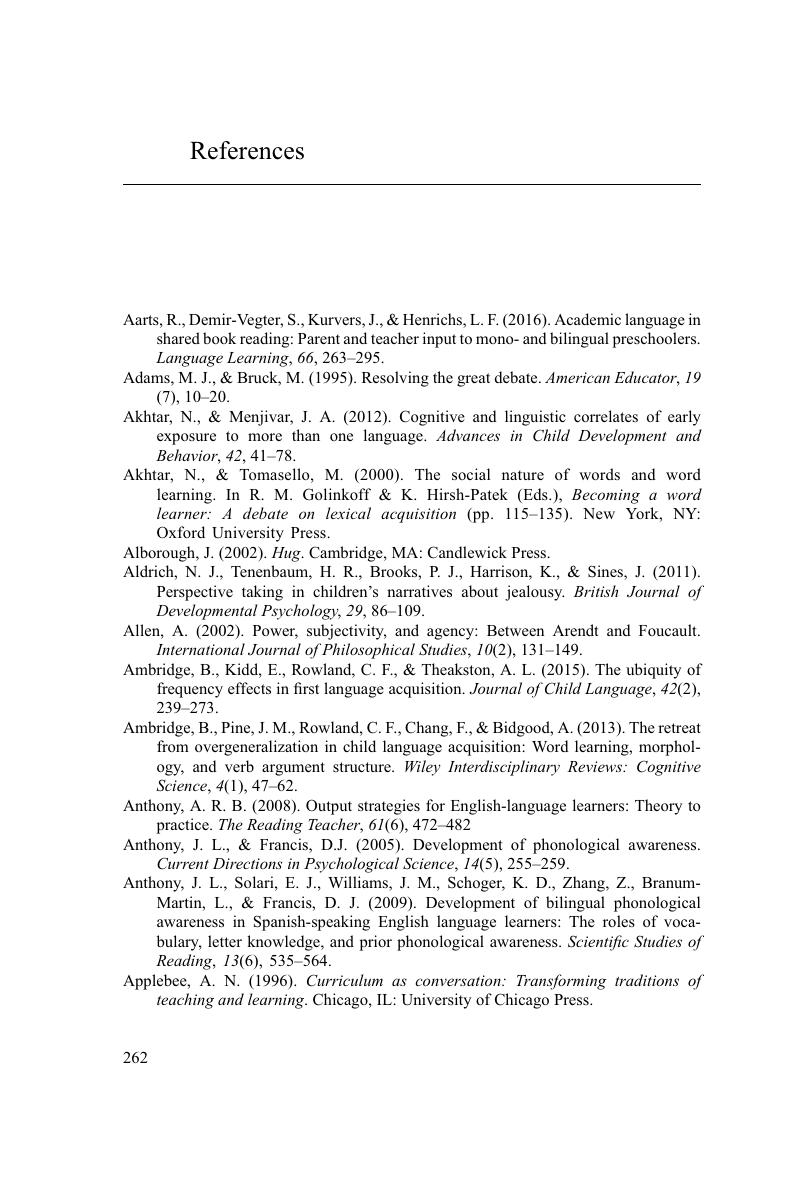Book contents
- Learning through Language
- Learning through Language
- Copyright page
- Contents
- Figures
- Tables
- Contributors
- Foreword
- 1 Learning through Language
- Part I Learning through Language during the Preschool and Early Elementary School Years
- Part II Learning through Language during the Middle School and Early Adolescent Years
- Part III Learning through More than One Language
- Afterword
- References
- Index
- References
References
Published online by Cambridge University Press: 04 May 2019
- Learning through Language
- Learning through Language
- Copyright page
- Contents
- Figures
- Tables
- Contributors
- Foreword
- 1 Learning through Language
- Part I Learning through Language during the Preschool and Early Elementary School Years
- Part II Learning through Language during the Middle School and Early Adolescent Years
- Part III Learning through More than One Language
- Afterword
- References
- Index
- References
Summary

- Type
- Chapter
- Information
- Learning through LanguageTowards an Educationally Informed Theory of Language Learning, pp. 262 - 308Publisher: Cambridge University PressPrint publication year: 2019

